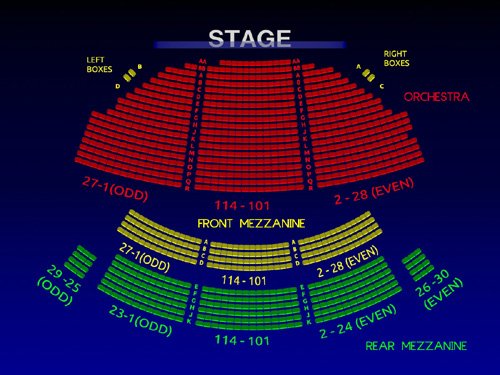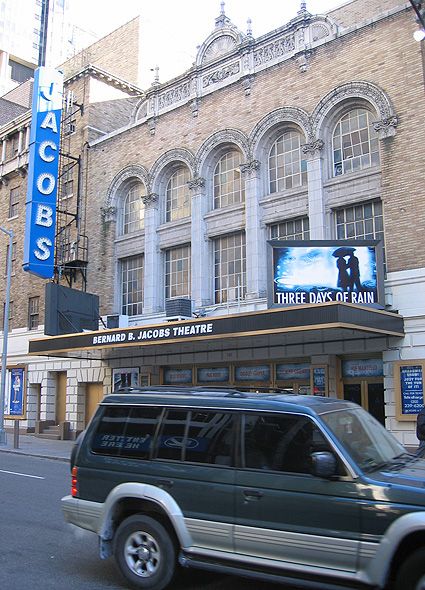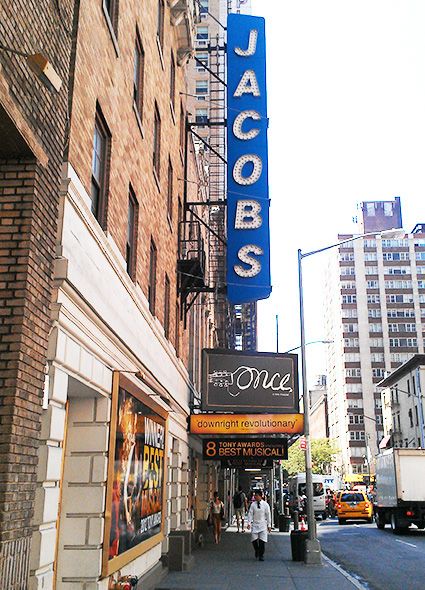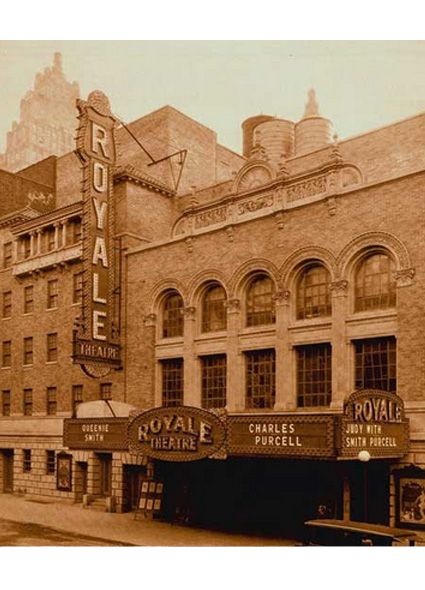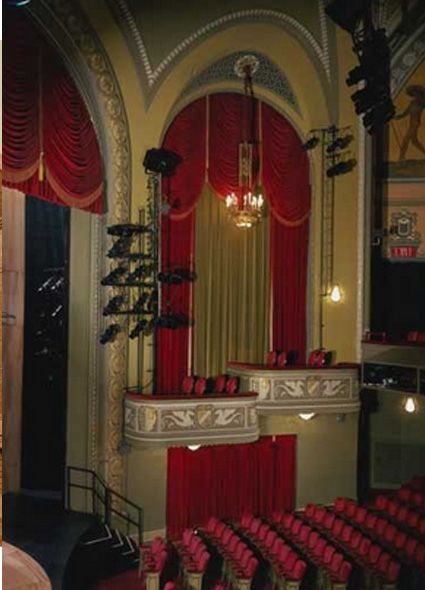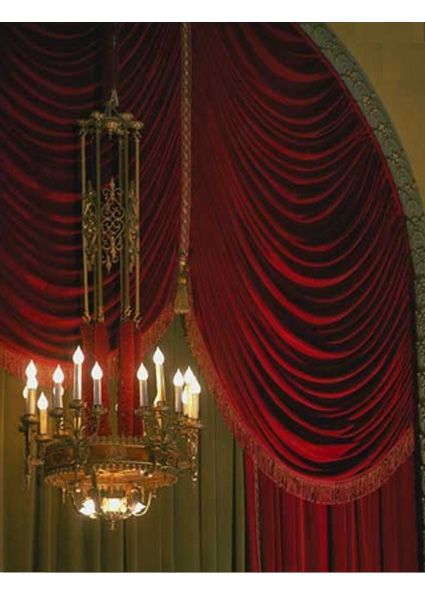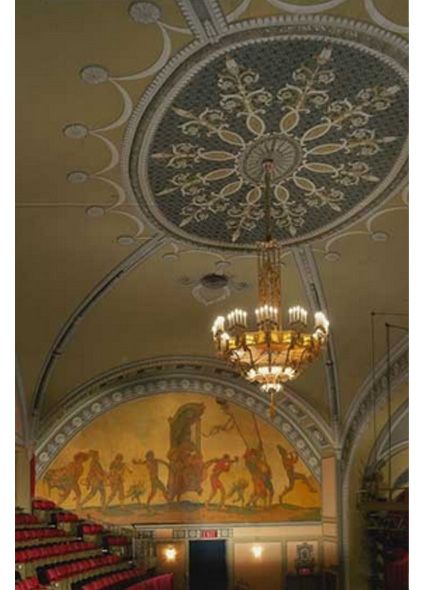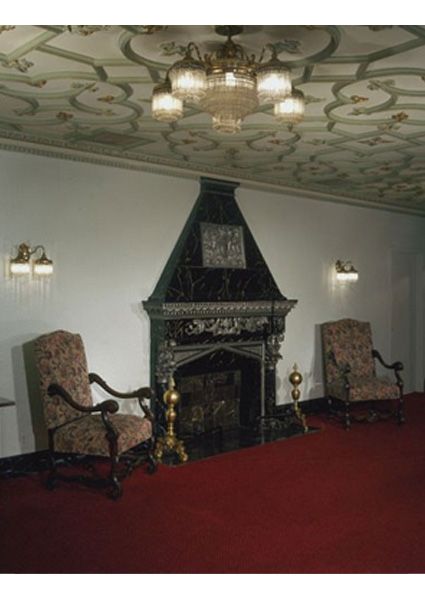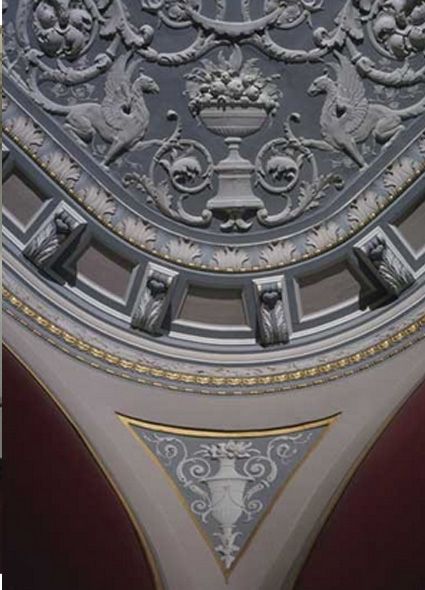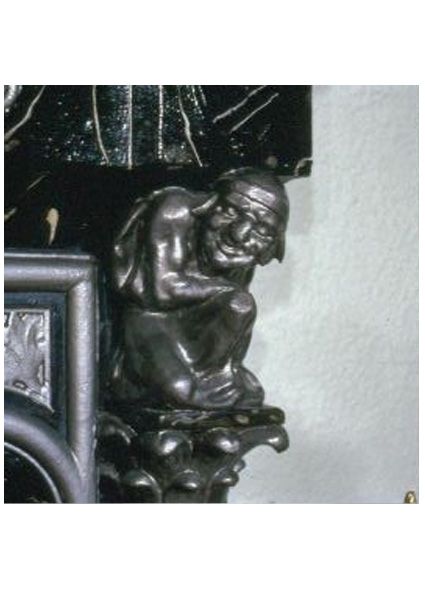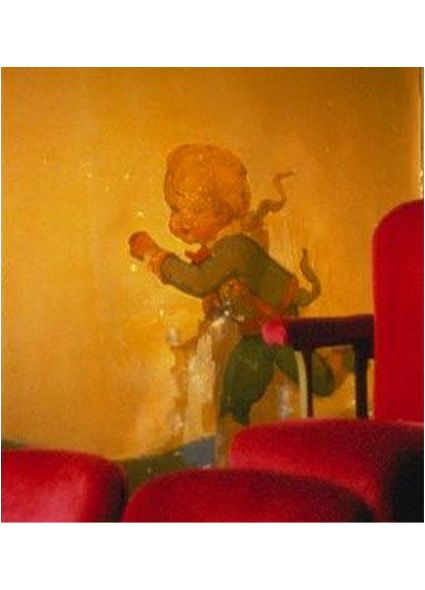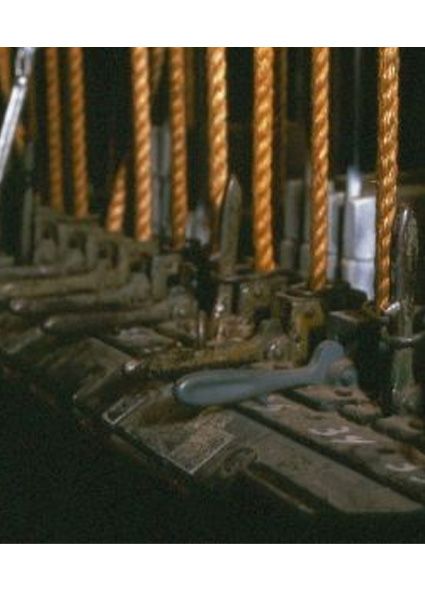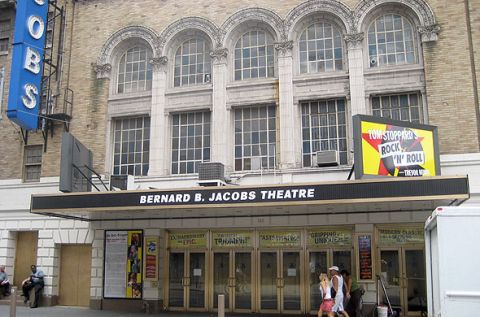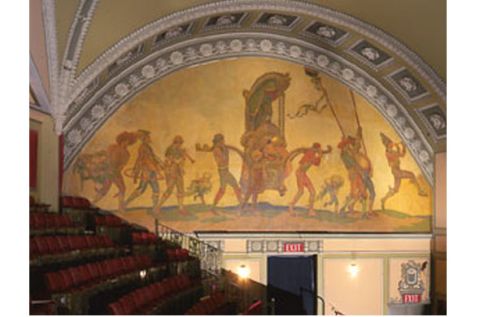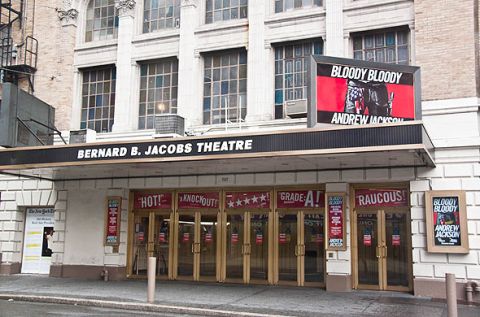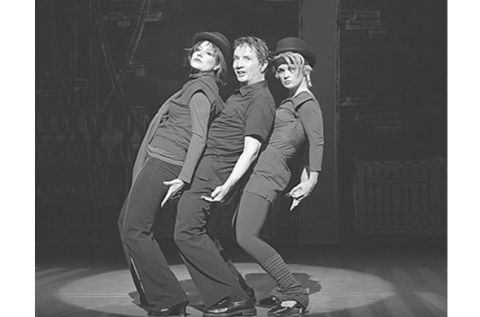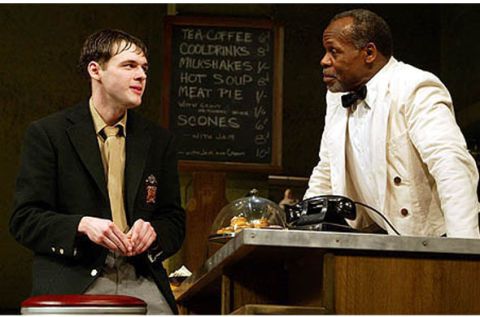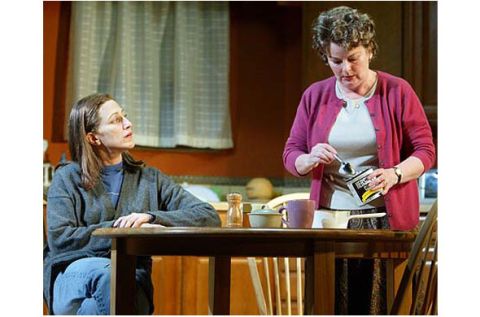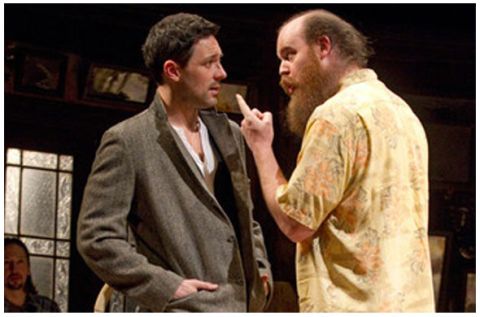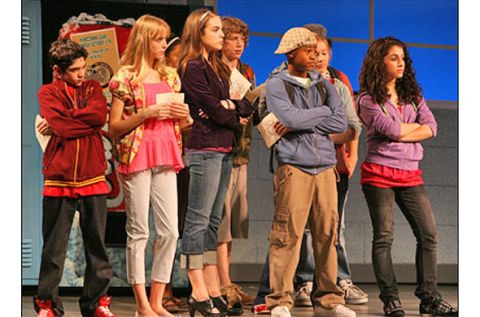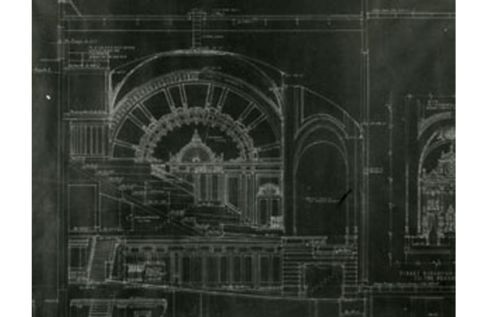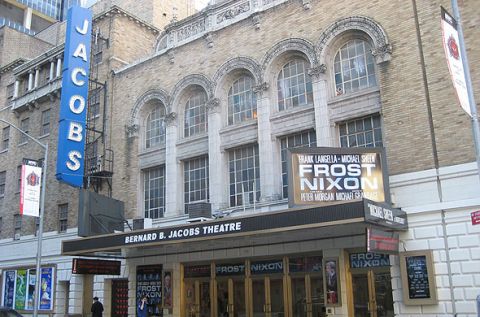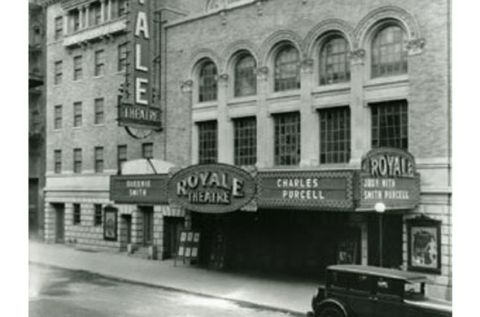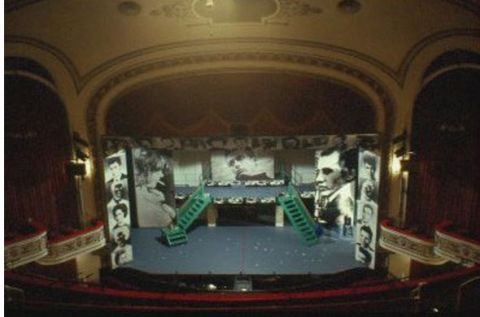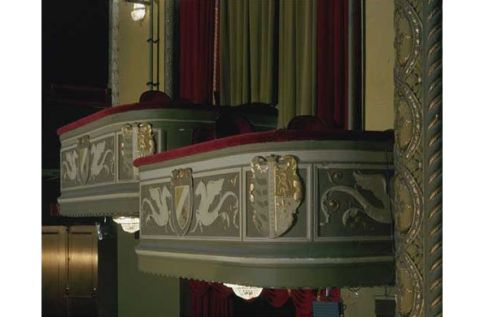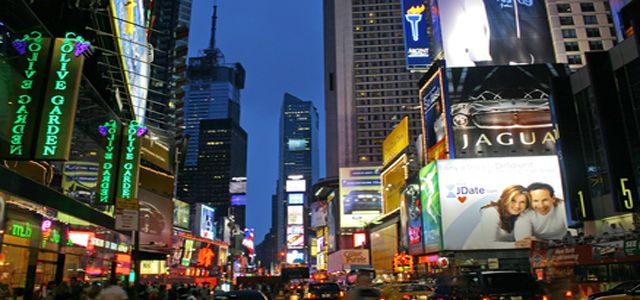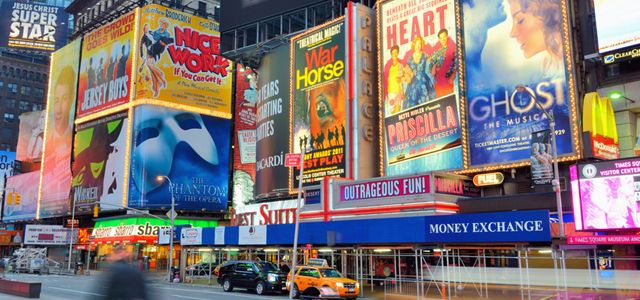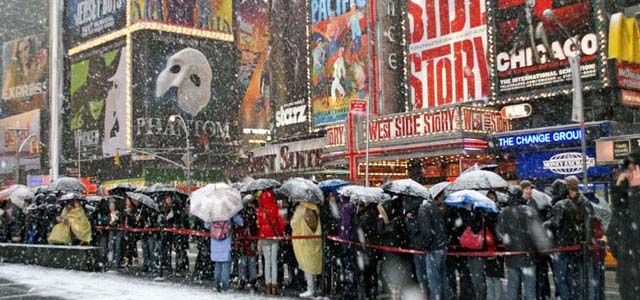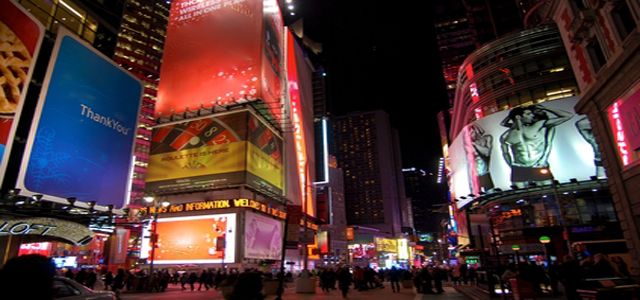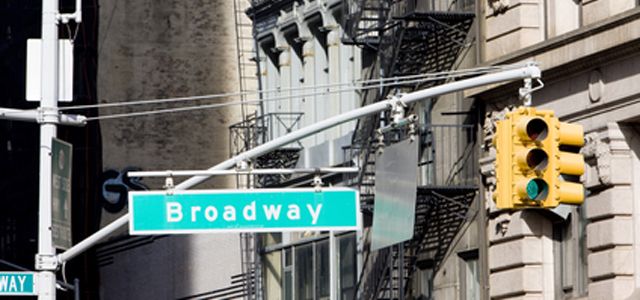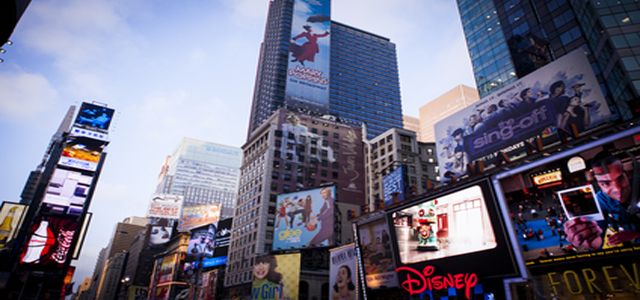The Bernard B. Jacobs Theatre
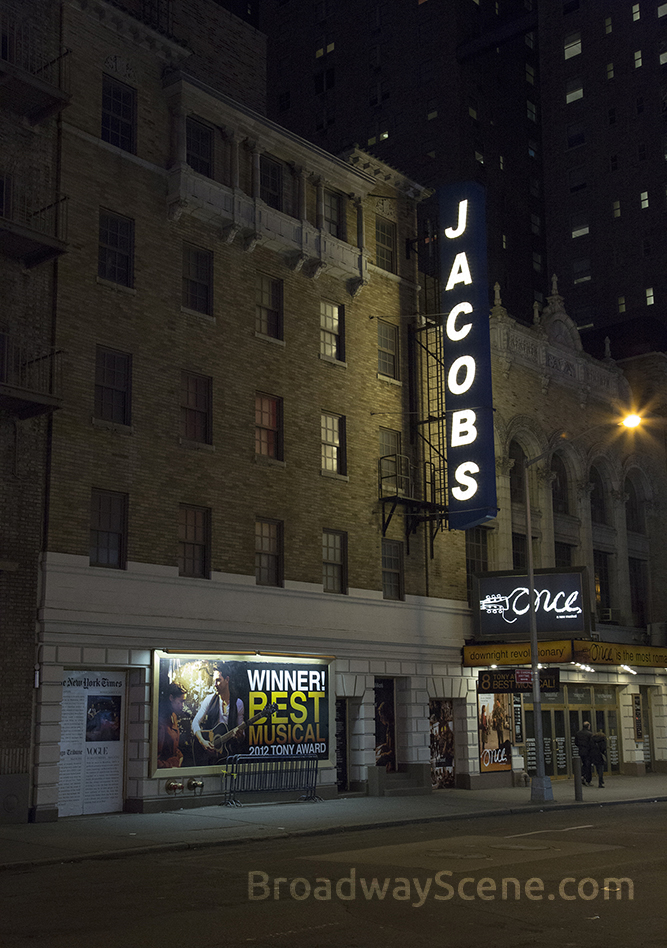 Formerly the Royale, the Bernard B. Jacobs Theatre was constructed in 1927 by the Chanin Brothers. It was part of a three-theatre facility that also included the Majestic Theatre and the former Theatre Masque (presently the John Golden). Three theatres in one building allowed productions to be moved to the most suitably sized theatre based on its ticket sales.
Formerly the Royale, the Bernard B. Jacobs Theatre was constructed in 1927 by the Chanin Brothers. It was part of a three-theatre facility that also included the Majestic Theatre and the former Theatre Masque (presently the John Golden). Three theatres in one building allowed productions to be moved to the most suitably sized theatre based on its ticket sales.
Diverse Production History
The Royale opened with the musical Piggy in 1927. However, a straight play was the theatre’s first success: Mae West’s Diamond Lil. In 1930, the Shuberts took over the theatre and then John Golden gained ownership of the Royale during the Depression, renamed it after himself, and managed the venue from 1934 to 1936.
In 1936, the Shuberts took ownership once again, changed the theatre’s name back to Royale, and rented it out to CBS as a radio studio until 1940. In the 1940s, the Royale presented several long-running shows and highly-praised productions. Cole Porter’s Du Barry Was a Lady opened in 1940 starring Gypsy Rose Lee, Bert Lahr, and Betty Grable. In 1941, The Corn is Green opened featuring Ethel Barrymore.
The 1950s, 1960s, and 1970s were filled with important theatrical productions, including The Boyfriend (1954) where Julie Andrews made her Broadway debut, The Matchmaker (1955) featuring Ruth Gordon, The Entertainer (1958) starring Lawrence Olivier, and The Night of the Iguana (1961) with Bette Davis. Other productions of note include Nina (1951) starring Gloria Swanson, The Immoralist (1954) featuring Geraldine Page and James Dean, and Grease (1972) which outdid Fiddler on the Roof as the longest running show on Broadway.
Mary Tyler Moore performed in Whose Life Is It Anyway? in 1980. In 1985, Andrew Lloyd Webber’s Song and Dance opened starring Bernadette Peters, who won a Tony Award. In 1988, David Mamet’s Speed the Plow took the stage, featuring Madonna in her Broadway debut. In 1989, Lend Me a Tenor opened with Philip Bosco, Victor Garber, and Tovah Feldshuh.
Significant productions of the 1990s include Conversations with My Father (1992) starring Judd Hirsch, and Art (1998). The 2000s witnessed Copenhagen (2000), the Pulitzer Prize-winning Anna in the Tropics (2003), and a highly-praised revival of A Raisin in the Sun (2004), featuring Sean Combs (also known as P. Diddy).
In 2005, the Royale was rechristened the Bernard B. Jacobs after the former president of the Shubert Organization. The following year, Three Days of Rain premiered in New York, and Julia Roberts made her Broadway debut. In 2007, Frost/Nixon opened with Frank Langella. God of Carnage was produced in 2009. It won a Tony Award for Best play and earned Matthew Warchus a Tony for Best Director. Since 2010, the Jacobs has presented hit productions such as The Mountaintop starring Samuel L. Jackson and Angela Basset and the Tony Award-winning musical Once.
A Midsized Venue
The Bernard B. Jacobs Theatre, a midsized playhouse that seats 1,078, was designed by Herbert J. Krapp in a contemporary Spanish style. The interior presents a cross-vaulted ceiling supported on each side by archways decorated with two paintings titled “Lovers of Spain.” The color scheme is orange, gold, and red. The venue is known for its high stage.
A Versatile Venue
The Bernard B. Jacobs Theatre is a comfortable playhouse, and the auditorium is notable for having plenty of legroom. The nifty characteristic of the Jacobs is that it is extremely versatile (and not solely as far as names go!). The theatre has witnessed a variety of dramas and musicals over the years, from comedic shows such as The Importance of Being Ernest to popular musicals such as Grease to more intimate and authentic musicals such as Once. It is the perfect space for a range of productions.

